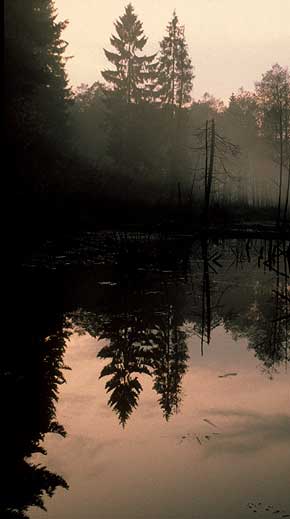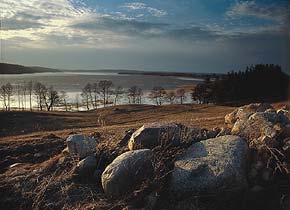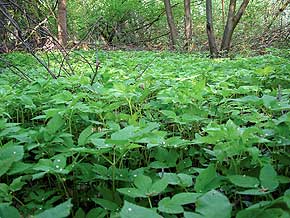|
15th |
WIGRY NATIONAL PARK
|
|||
|
of "WIGRY"
|
Jerzy Solon
Wigry National Park – goals and motives for protection
The basic principles of protection of the Wigry National Park take into account the world tendencies and trends of activities, charted by the International Union for Conservation of Nature (IUCN) in global strategies for protection of biological diversity.
Classical aims and forms of conservation are not sufficient, however, because of the Park’s values comprising, among others, a varied complex of lakes, moraine and sandr landscape arrangements, rich flora, abundant animal world and settlement arrangement, which reflects the history of the region. Therefore, it was assumed that the superior aim of activities in the Wigry National Park is a complex and many-sided protection of natural and cultural heritage.
The sense of existence of the Wigry National Park and trends of protective policy should be examined from three different points of view, i.e. in a European and national perspective, a regional perspective and a local one. With these different points of view there are also different protective motives, goals and tasks.
The Wigry National Park’s landscape is representative of lake districts (created as a result of the last glaciation) in a large part of Europe, stretching from Maklemburgia in the west to Lithuania in the east. In this area there are around one hundred protected areas of different significance. These are mainly reserves and landscape parks. However, only two national parks are similar in nature and can be compared to each other, both for their conditions of natural environment, and for their history and kind of settlement – the Aukstaitija National Park in Lithuania and the Wigry National Park. As far as the abiotic conditions are concerned, the Muritz National Park (Maklemburgia) in Germany is similar, although as far as the geobotanical conditions are concerned, it is representative of Western Europe.
The Wigry National Park is a place of occurrence of numerous types of well-preserved habitats, valuable from the European point of view and which are listed in annexes to Habitat Directive (directive of the Council 92/43/EEC concerning conservation of natural habitats and wild fauna and flora). These natural habitats (ecosystems) comprise various types of forests (e.g. marshy coniferous forests, spruce-trees on peat, alder carr, marshy meadows and dry ground forests) and numerous unforested ecosystems (in this, some aquatic communities, complex of dystrophic small lakes, dry meadows and grass, some rushes and sedge communities, wet meadows, lowland bogs, transitional moors, and high bogs). Altogether they occupy nearly half of the Park’s area. That is why the Park has been entered on the planned list of Natura 2000 areas.
The abundance of species and the degree of preservation of the plant cover and animal communities have caused that the Wigry National Park and the Augustowska Forest have become a biocentre of European importance in this crucial European area. There are the following motives for nature conservation in this area: its representative geographical character, naturalness of many ecosystems, both due to their origin and to species composition, scarceness of occurrence of many types of habitats, and the linking function between various regions. Moreover, the following elements are really essential: economic, aesthetic, historical, environmental and scientific ones, and functions such as: those shaping the environment (hydrological function, function of topoclimate control, pollution control function, biotic functions (function of plant and animal life-space, linking function), social functions (function of human life-space, function of archive and cultural heritage, production function, storage function). Permanent assurance of possibilities of realization of the functions listed above is only possible under conditions of appropriate spatial structure of landscape. The realization of all protective goals resulting from different motives requires, first of all, a wise self-limitation on the part of all users in gaining short-term and one-time profits for the benefit of permanent preservation of natural and practical values of the area.
Meadows by Leszczewek village. Phot. M. Kamiński
|
|||
|
|
|



